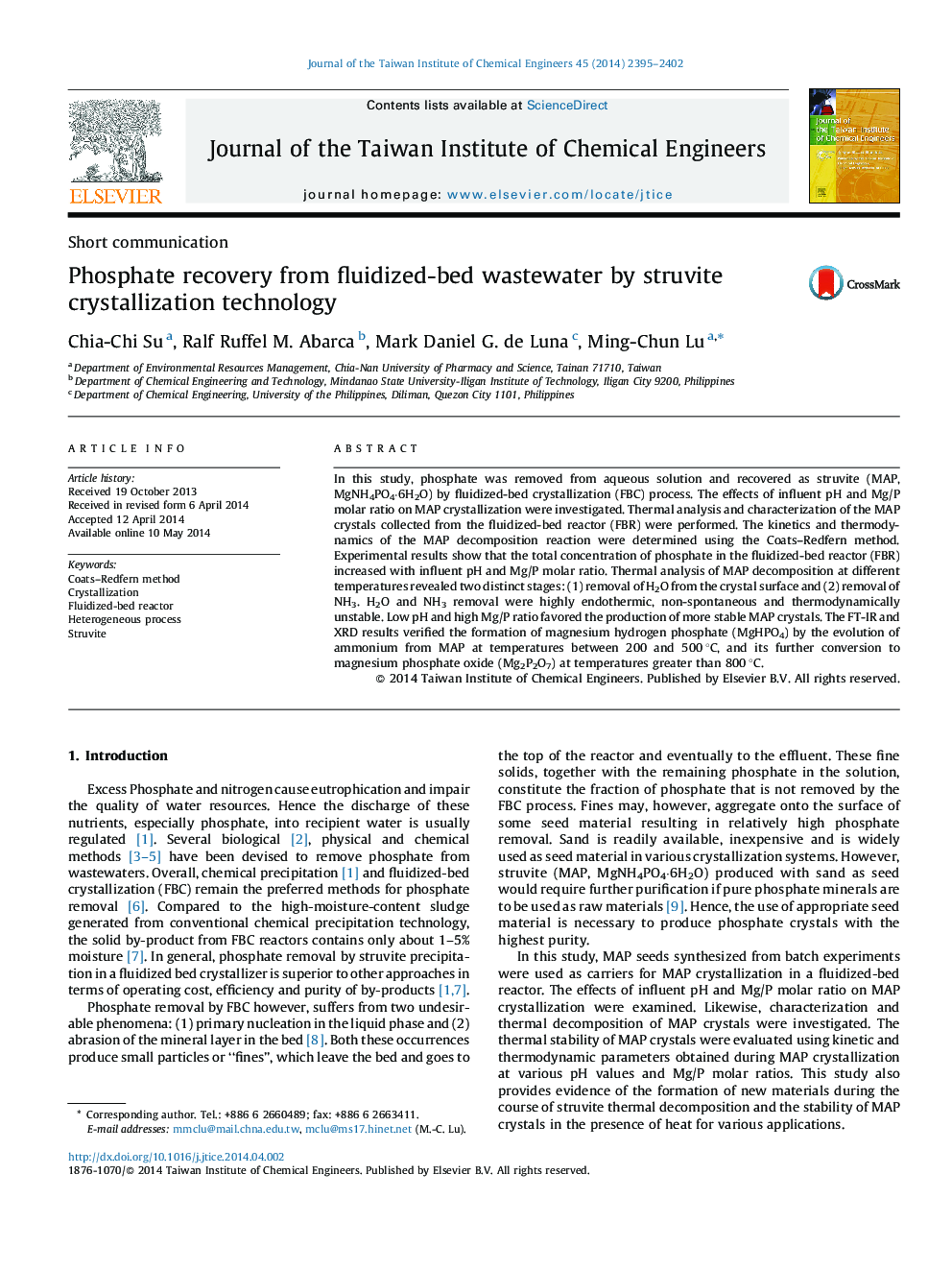| Article ID | Journal | Published Year | Pages | File Type |
|---|---|---|---|---|
| 691502 | Journal of the Taiwan Institute of Chemical Engineers | 2014 | 8 Pages |
•Synthesized MAP seeds were used as carriers for fluidized-bed crystallization of MAP.•The Coats–Redfern method was used to determine the thermodynamics of the decomposition of MAP.•A thermal analysis and characterization of the MAP crystals decomposition were performed.•The removal of H2O and NH3 were highly endothermic, non-spontaneous and thermodynamically unstable second-order reactions.•MAP crystals were converted to Mg2P2O7 through MgHPO4 at temperature more than 200 °C.
In this study, phosphate was removed from aqueous solution and recovered as struvite (MAP, MgNH4PO4·6H2O) by fluidized-bed crystallization (FBC) process. The effects of influent pH and Mg/P molar ratio on MAP crystallization were investigated. Thermal analysis and characterization of the MAP crystals collected from the fluidized-bed reactor (FBR) were performed. The kinetics and thermodynamics of the MAP decomposition reaction were determined using the Coats–Redfern method. Experimental results show that the total concentration of phosphate in the fluidized-bed reactor (FBR) increased with influent pH and Mg/P molar ratio. Thermal analysis of MAP decomposition at different temperatures revealed two distinct stages: (1) removal of H2O from the crystal surface and (2) removal of NH3. H2O and NH3 removal were highly endothermic, non-spontaneous and thermodynamically unstable. Low pH and high Mg/P ratio favored the production of more stable MAP crystals. The FT-IR and XRD results verified the formation of magnesium hydrogen phosphate (MgHPO4) by the evolution of ammonium from MAP at temperatures between 200 and 500 °C, and its further conversion to magnesium phosphate oxide (Mg2P2O7) at temperatures greater than 800 °C.
